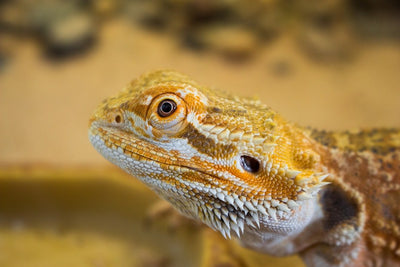Welcome to the exciting world of ball python care! If you're a new pet owner, setting up your ball python tank can seem like a daunting task. But don't worry, we're here to guide you through the process.
Creating a comfortable and enriching environment for your ball python is crucial. It's about more than just aesthetics; it's about mimicking their natural habitat to promote their well-being.
In this guide, we'll cover the essential components of a ball python tank. From heating and lighting to substrate and humidity, we'll help you understand what your slithery friend needs to thrive.
We'll also delve into the importance of enrichment and tank maintenance. Plus, we'll highlight the latest products and innovations in reptile care.
So, whether you've just welcomed a ball python into your home or are considering doing so, this guide is for you. Let's embark on this journey together to ensure your ball python enjoys a happy, healthy life in its new home.
Understanding Ball Python Needs
Ball pythons, native to Africa, thrive in warm, humid environments. It's essential to replicate these conditions within their captive habitat. These snakes are known for their shy, reclusive nature and love to spend time in confined spaces.
Understanding their natural behaviors and preferences helps in creating an ideal habitat. Ball pythons need secure hiding spots to feel safe. They require proper temperature gradients for thermoregulation. Hydration and humidity are key, as these factors support healthy shedding and overall well-being. Meeting these basic needs ensures a stress-free and happy ball python.
Choosing the Right Tank
Selecting the correct tank is a crucial step in ball python care. An adult ball python requires a tank that is at least 36 inches long, providing enough space to move comfortably. The tank's size impacts the snake's well-being, allowing for natural movement and exploration.
Ventilation is vital to prevent respiratory issues, so choose a tank with a secure, ventilated lid. This also helps prevent escapes, a common concern for snake owners. Ensure the tank is placed in a quiet area away from loud noises, as stress can negatively affect your snake's health.
Creating a Temperature Gradient
Establishing a temperature gradient is essential for a healthy ball python habitat. This gradient mimics their natural environment, offering a warm side and a cooler side within the tank. The warm side should be around 88-92°F, while the cooler side should sit at about 76-80°F.
Providing these temperature variations allows your python to regulate its body temperature efficiently. Use reliable thermometers to monitor different areas of the tank closely. Consistent temperature ensures your ball python maintains proper metabolic functions, supporting digestion and overall health. Balancing these temperatures correctly helps reduce stress and promotes a happy, active snake.
Selecting the Best Substrate
Choosing the right substrate is vital for your ball python's comfort and well-being. It plays a crucial role in managing humidity levels and maintaining cleanliness in the tank. Popular options include aspen shavings, cypress mulch, and coconut husk, each offering its benefits.
When selecting a substrate, consider its ability to retain moisture and ease of cleaning. Avoid substrates like sand or cedar, as they can cause respiratory issues or skin irritation. Regularly changing and cleaning the substrate will keep your python's habitat hygienic. A well-chosen substrate enhances your snake's environment, contributing to a healthier, happier life.
Regulating Humidity and Hydration
Maintaining the right humidity is crucial for your ball python's health. Aim for a humidity level of around 50-60%. This helps with proper shedding and keeps the snake's respiratory system healthy. Use a digital hygrometer to monitor these levels accurately.
Providing a water dish large enough for soaking supports hydration and aids in shedding. Ensure the dish is always clean and filled with fresh water. If humidity drops, mist the tank or add humidity-enhancing substrates. By creating a stable, humid environment, you ensure your ball python thrives in its habitat.
Heating Elements and Thermostats
Proper heating is fundamental for your ball python's well-being. Ball pythons need a warm spot of 88-92°F, while the cool end should be around 78-80°F. This temperature range helps them digest food and stay healthy.
Select heating elements like under-tank heaters or ceramic heat emitters for consistent warmth. Pair these with a reliable thermostat to prevent overheating. A thermostat ensures that temperatures remain stable, avoiding stress or health issues for your snake. By controlling the tank's climate, you create a safe environment that closely mimics their natural conditions.
Lighting: Day and Night Cycles
Lighting plays a key role in maintaining a ball python's internal clock. Even though they don't need UV light, distinguishing between day and night is important. Providing a day-night cycle helps regulate their behavior and feeding patterns.
You can use ambient room light or a low-wattage bulb to simulate daylight. At night, ensure the tank is dark to mimic natural darkness. Consistent lighting patterns will enhance your snake's comfort and overall health. Remember, it's about balance, aiding the ball python in adapting to a natural rhythm within your home environment.
Enrichment: Hides and Decor
Ball pythons love to hide, making hides a must-have in their habitat. They provide security and reduce stress, a key factor in their well-being. Place multiple hides at different temperatures to allow your snake to regulate its body heat while feeling secure.
Incorporating natural decor like branches and rocks encourages natural behavior such as climbing and exploring. These elements bring their environment to life, offering mental stimulation and exercise. Avoid sharp edges to keep your snake safe from injury. Thoughtful decor keeps your ball python engaged and mimics the diverse textures and sights of their natural habitat.
Tank Maintenance and Hygiene
Keeping your ball python's tank clean is essential for its health. Regular cleaning prevents the buildup of bacteria and parasites, which can pose health risks. Perform spot cleaning daily by removing waste and uneaten food to maintain a tidy environment.
Deep cleaning of the tank should be done monthly. This involves disinfecting hides, water bowls, and decor. Use reptile-safe cleaners and ensure everything is thoroughly rinsed and dried. Consistent maintenance of the tank safeguards your snake against illnesses and creates a refreshing habitat, ready for your ball python to thrive and explore in comfort.
Conclusion: Enjoying Your Ball Python
Providing the ideal setup for your ball python enhances their well-being and your enjoyment as an owner. By understanding and catering to their specific needs, you create a happy, healthy environment. Embrace the journey of learning and delight in watching your snake thrive in its thoughtfully crafted habitat.






